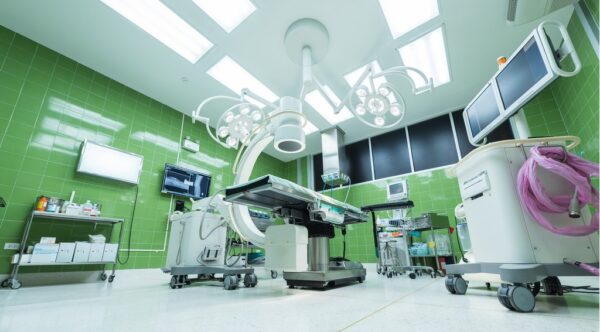For the last three years, the world’s population has had to deal with an infectious disease that has claimed the lives of millions. Just as COVID’s severity lessened and the virus’ mutations made it a lot less dangerous, another virus, not quite as virulent, but just as intimidating, reared its ugly head. Monkeypox is now sweeping the globe, infecting thousands.
Because of the rise in viruses (which coincides with the growing global population, experts say), hospitals have had to ramp up security measures to prevent the spread of infections. This post will tell you how they are doing this:
UV Sanitizing
UV stands for ultraviolet. It is a type of light that can be used to kill viruses and germs. In hospitals, UV light is used to disinfect surfaces, rooms, and people’s clothing. A UV shoe sanitizing mat, for example, can be used to eliminate any and all germs present on a hospital worker’s shoes, which means that they won’t have to worry about bringing a virus into work with them. It is possible for viruses to cling to people’s shows and then infect people. UV light isn’t just an effective way of killing off germs and bacteria, it can also kill off mold, which can also sometimes be present on people’s footwear, depending upon where they have been walking. Mold spores can then be released into the air, which can be dangerous for patients that have breathing problems or allergies.
Regular Testing
Regular testing is an extremely effective way for hospitals to prevent staff from coming into work with a virus or an infection. During the COVID-19 pandemic’s height, hospital workers were tested every single day, using swab tests. The tests yielded instant results. If a hospital worker tested positive, they would either be quarantined or they would be sent back home. Regular testing helps hospitals to ensure that their staff aren’t sick and can’t make anybody else around them sick, which is crucial since that in a hospital setting, there can be very vulnerable people.
Air Sterilizers
Air sterilizers are used sometimes also. These sterilizers also use UV light. These pieces of technology are often used when a bad smell becomes present in a room or area of the hospital. Otherwise, they aren’t used. A bad smell is usually the first indication that a germ or bacteria is beginning to establish itself somewhere. Bad smells can also indicate the presence of mold, which as already mentioned, can be extremely dangerous in a hospital setting, especially if the unit with the smell is an intensive care card where people are hooked up to ventilators and other breathing-assistance devices.
Macerator
A macerator is a piece of technology that’s used to eliminate and destroy human waste. Human waste can be very dangerous if it is left around and can lead to nasty germs and bacteria being released into the air. Because in a hospital setting some patients aren’t able to go to the toilet and instead have to go in buckets or small pots, there can be a large build-up of human waste, and it is not safe to just tip it down the toilet. A macerator can be used to remove all of this waste safely, and in a way that doesn’t impact anybody’s health.
Fogging Machine
Fogging machines, as you might expect, release little droplets, which sanitize and clean the air, and also hard-to-reach places. The use of fog machines is rising, especially since people are concerned now about viruses being spread through contact with surfaces. A fogging machine can completely eliminate any trace of germs or bacteria in a room. These machines can be expensive, however, not to mention very complex. For this reason, they aren’t used as much as they perhaps should be (though use is rising, as already stated). As this tech develops and becomes more affordable to use, then it’s likely that it’ll be seen more.
Alcohol Sanitisers
Finally, it’s very common in hospitals and health care settings for alcohol sanitizing wipes to be used. People use these to wipe down surfaces, chairs, and really anything that people have touched. In addition to wiping down surfaces, people can actually use these wipes to clean their hands after they have been in contact with something that could be potentially dangerous for them. Alcohol gel is also used to clean people’s hands. Most hospitals have alcohol gel stations located in every department and part of the hospital for the public to use (and also for staff to use).
Hospitals have to be very careful about the spread of viruses and germs in their facilities since there are vulnerable people present. Reducing infections allows them to make their facilities a lot safer for the patients staying there. The technology outlined here is how they are making hospitals safer.
